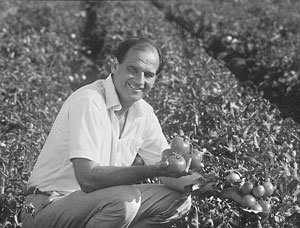
This Article From Issue
March-April 2002
Volume 90, Number 2
DOI: 10.1511/2002.10.0
Lords of the Harvest: Biotech, Big Money, and the Future of Food. Daniel Charles. xx + 348 pp. Perseus, 2001. $27.
The Green Phoenix: A History of Genetically Modified Plants. Paul F. Lurquin. xii + 173 pp. Columbia University Press, 2001. Hardbound $50, paper $25.
Lords of the Harvest is an engaging account for a popular audience of "how genetically engineered foods came to be, and why." Author Daniel Charles, a science journalist who has worked for New Scientist and National Public Radio, does an exceptionally good job of explaining in lay terms the technicalities of genetic manipulation of organisms. In tracing the labyrinthine corporate history of the commercialization of pest-protected and herbicide-resistant crops, he has also written a book that is revelatory for scientists. Descriptions of the structure and function of the gene that encodes Bacillus thuringiensis ("the first useful gene," which confers protection against a narrow range of insects) are seamlessly intermingled with accounts of the intense international corporate competition to patent the gene—"a race for property rights" that led to court cases and accusations of patent infringement and "microbial larceny." In recounting the search (most famously in soybeans) for genes conferring herbicide resistance, Charles explains lucidly the multiple genetic routes toward the goal. His account of the battle between the industrial empires of Monsanto and Hoechst for preeminence in the field is as gripping as a Tom Clancy novel.

From Lords of the Harvest.
Charles, who grew up on a small family farm in Pennsylvania, is also particularly effective at describing why agriculture is a unique enterprise, one with a tremendously long history and an abundance of traditions. Monsanto's efforts to become the "Microsoft of agriculture" by licensing genes were complicated immeasurably by the fact that seeds are perceived generically as a public good, like rain and sunlight (moreover, a public good that can multiply itself), rather than as intellectual property.
Agriculture is by its very nature a messy undertaking, vulnerable to the vagaries of nature. Financier George Soros, expressing his lack of enthusiasm for agricultural biotechnology as an investment, remarked in 1981 that he didn't like "businesses in which anything you could possibly do will be overwhelmed by the effects of the weather." Calgene discovered this truth to its detriment with the Flavr Savr tomato (engineered to prolong shelf life), which, despite being a technical triumph, eventually succumbed to disease, weeds, hot sun, harvest and shipping problems, and consumer indifference.
The inherent messiness of agriculture also underlies public concerns. Agricultural biotechnology is applied not in sterile laboratories but in the natural environment and eventually ends up not only in people's homes but in their stomachs. Charles describes objectively the personalities and players allied in opposition to agricultural biotechnology. He also provides for nonscientists a fair and balanced account of the scientific evidence regarding its adverse environmental and health effects, along with a clear-eyed critical analysis of industry claims for biotechnology's potential to improve agriculture in developing nations.
The Green Phoenix also presents a history of agricultural biotechnology, one aimed not at the public but at biologists. Author Paul Lurquin is a professor of genetics at Washington State University and a long-time active participant in plant biotechnology research.
Reading his account of the mistakes, misinterpretations and missteps of early efforts at gene transfer, one wonders how the field ever managed to get off the ground. As Lurquin convincingly documents, the purportedly successful technique of soaking dry seeds in solutions of bacterial DNA simply could not have effected genetic transformation—not without an agent to force donor DNA into recipient cells and a bacterial promoter capable of driving expression in a plant system. That early missteps did in fact lead to more successful methods—gene cloning, Agrobacterium-mediated DNA transformation, particle bombardment and tissue electroporation among them—is a testament to the robustness of the scientific enterprise. A recurring theme throughout the book is that scientific research is a self-correcting process, the ultimate validation of which is that genetically transformed plants have come to dominate the agricultural landscape.
The Green Phoenix is not for the casual reader; it presupposes not only "knowledge and understanding of elementary classical and molecular genetics," but also familiarity with plant classical and molecular genetics. Some of Lurquin's explanations for outsiders are mystifyingly technical, and the well-intentioned glossary occasionally falls short (failing, for example, to include the term heteropycnic). The book really is for contemporary plant molecular biologists and biotechnologists who are interested in the origins of their field. This rather small audience can truly appreciate the "Homeric, frustrating, and exhilarating" debates of its early years; for less specialized readers, the works of Homer are probably more gripping reading.—May Berenbaum, Entomology, University of Illinois at Urbana-Champaign
American Scientist Comments and Discussion
To discuss our articles or comment on them, please share them and tag American Scientist on social media platforms. Here are links to our profiles on Twitter, Facebook, and LinkedIn.
If we re-share your post, we will moderate comments/discussion following our comments policy.